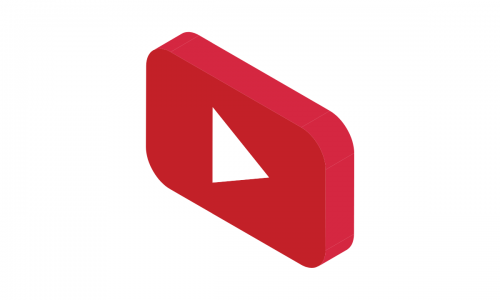Table of contents
Czytasz teraz:
Alt Tag – what is it? The five most essential things about alt tags!
Close
Currently, more and more Google search results are text and graphics. It turns out that 22.6% of all searches on the web are performed in Google Graphics:

Seeing such a phenomenon, it is, therefore, necessary to adjust the uploaded graphic files so that they also help generate traffic. How to do it? The so-called alt tags play a big part in that. Before we go into detail about this matter, let’s explain exactly what an alt tag is.
Alt tag – what is it?
The alt tag, also known as “alt attribute” and “alternative description,” is an HTML attribute applied to image tags to provide a textual alternative for search engines. Using alt tags, for example, for photos of products, can positively affect the website’s position in the search results.
Alt tags are essential elements that make a website accessible to Google. They have been used since HTML 2.0, that is, since 1995.
(You will find the rest of the article below the form)
Contact us and get a free quote
We will analyze your business and prepare an individual price offer for the optimal marketing mix for you. Completely free.
Verseo spółka z ograniczoną odpowiedzialnością with its registered office in Poznań, at the following address ul. Węglowa 1/3, 62-122 Poznań is an administrator of your personal data.
About Verseo
Company’s office is located in Poznań. Company is entered into the register of entrepreneurs, kept by the District Court of Poznań – Nowe Miasto i Wilda in Poznań, 8th Commercial Division of the National Court Division under number 0000596164, NIP (Tax Identification Number): 7773257986. You can contact us by writing a letter on the address indicated above or e-mail:[email protected]
You have right to:
- access to your personal data,
- correct your personal data,
- demand to remove your personal data,
- restrain to process your personal data,
- object of process your personal data,
- transfer your personal data,
- withdraw consent.
If you think we process your personal data not in accordance with the law, you have right to object to supervisory authority – President of Personal Data Protection Office.
We process your personal data to:
- handle your question, based on art. 6 ust. 1 lit. 6 of General Data Protection Regulation
- promote our goods and services including ourselves in connection with your consent, based on art. 6 ust. 1 lit. a of General Data Protection Regulation
- protect or claim in connection with our reasonable interest, based on art. 6 ust. 1 lit. f General Data Protection Regulation
You share your personal data freely. Please remember that without sharing your personal data you will not be able to send us a message, and we will not be able to answer you.
We can share your personal data with trusted recipient:
- providers of tools made for: website analytics, marketing automation,
- hosting operators.
We will process your personal data by the time:
- which is necessary to achieve a specific purpose for which they were collected and after this term by the time which is necessary to protect or possible claim,
- of withdraw your permission .
We don’t process personal data in a way, which would involve making only automated decisions about you. More information about processing of personal data you can find in our privacy policy.
Why is the alt tag so important?
There are two groups for whom alt text is essential:
- Disabled people
People with reading difficulties often use software that reads the text on the searched website. When such software encounters an image, it can’t recognize what it depicts. Instead, it reads the alt tag aloud.
Attributes are also helpful for users browsing the web with readers or browsers that cannot process images.
- Google robots
As mentioned in the definition, search engines send bots that discover the content of your website. Alt text helps them better understand the context of the image and text and also helps to classify the image in the visual search results themselves. As a result, alt text is an SEO factor.
Alt tag and title tag – differences
The title tag does not support bots in finding images. Instead, it can also convey to visitors what the photo is about.
The alt tag is targeted at bots, while the title tag is about humans.
As John Mueller pointed out:
“The alt attribute should be used to describe the image. If you have a photo of a large blue pineapple-shaped chair, you should use the alt tag that best describes it. So, it will be alt = “big blue pineapple-shaped chair”. The title attribute should be used when the image is a hyperlink to a specific page. The title tag should contain information about what will happen when you click the image. For example, if the image becomes larger, the text should contain something like: title = “see a larger version of the image of a large blue pineapple chair”.
What should an alt tag look like?
Include lots of valuable details
The alt text should be written in plain language. The more detailed the text, the better.
Imagine you are selling computers over the Internet. Which of the following examples will be the best version of an alt tag?
- computer
- laptop computer
- ASUS laptop
- ASUS ZenBook laptop
- ASUS ZenBook laptop (UX433FA-A5046T)
Of course, the last suggestion will be the best. If your store sells different laptop types, the images should include text specifying the brand, size, and model.
Take care of the correct length
Some devices truncate the alt text length at 125 characters. Therefore, it is best if the description is about 100 characters.
To make the most of this limit, avoid overly detailing small details.
Wrong: a black dog on the right and a white dog on the left in the meadow with green grass and little yellow flowers.
Good: black dog and white dog in the meadow.
In addition, avoid phrases such as “photo of a dog that …” as they are entirely unnecessary.
Add a keyword
If you leave the image interpretation to Google bots, they may not understand its actual content.
Therefore, use the appropriate keyword in the alternative description. Including it will help you increase the positioning of a given page for the selected key phrase.
In addition, you can decide to add your business name to the photos you post on the website. Thanks to this, you can indicate that a given image is associated with your brand.
Don’t post your alt text everywhere
You should use alt text on:
- the main images of the blog post
- images used on your website
- product photos
- headers
While it is a good idea to include alternative text as often as possible, there are some exceptions.
Alt text should not be used where the element does not function as a typical informative image—for example, horizontal lines separating a page. The background element, an image instead of part of the style sheet, also doesn’t need an alt tag.
Remember about proper formatting
Downloaded images often have a filename like “5-things-you-should-know-about-alt-tags.” However, if you would like to use this text as alternative text (e.g., for small infographics describing these errors), you should remove the hyphens (the little dashes) contained here.
Why?
The alt text must be natural. Imagine what it would be like for software to read such text – we would hear a “hyphen” with every word.
Summary
Use the tips given here. Properly adjusting your alt attributes is a small part of overall SEO optimization, but it also matters. It will help you get more traffic from your image searches. Additionally, your content will be accessible to people with limited reading abilities.












